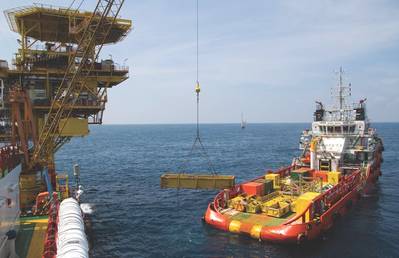Like marine coatings, preparation is everything when it comes to sourcing and attracting marine finance support.
If you’re familiar with the maritime industry at all, this won’t come as a shock: we’ve seen better days. Like many industries, this is one that goes up and down and, right now – depending of course on sector your focus resides – we’re pretty far down.
This severe downturn began in late 2014 and we’ve seen many financing sources exiting the offshore market since. It seems that lenders have zero interest in lending into the U.S. Gulf of Mexico. And, increased bank regulator scrutiny on transactions tied to the energy market only exacerbate an already difficult situation to navigate. This is in stark contrast to the surge this industry experienced about two decades ago. But, we know well: what goes up, must come down and, with softer industry conditions, we’re certainly at a low.
The good news? Sure, the market for financing new tonnage has significantly declined and there are fewer good choices for finance sources, but there are still good choices for finance sources. As someone with more than 20 years providing financial solutions to the maritime industry, I know this to be true.
If we’re being honest, this industry can be a scary place not just for those who work in the industry, but also for lenders to this industry. Financing sources have experienced losses on deals booked and tougher regulations make maritime lending a risky game to play. But, it’s not an impossible game, especially when borrowers can do the leg work to show they are a reliable candidate.
What are we looking for?
Obviously, we’re looking for a safe bet. That doesn’t mean everything has to be 100 percent perfect. But we are looking at certain things right off the bat in order to make a decision. Be prepared for a lender to begin analysis of your company by looking at these five topics.
- Earnings: We want to see three to six months of positive earnings before interest, tax, depreciation and amortization (EBITDA). We’re looking for an indication of your performance despite industry conditions.
- Leverage: How much debt do you have currently? What debt trends can we see in your company history?
- Liquidity: We’ll look for cash, line availability and outside sources of liquidity.
- Asset quality: What are you looking to finance? And, what is the quality of your existing fleet?
- Outlook: How far out can we see this company’s earnings with comfort?
Help Steer the Ship
These first considerations can seem a little outside of your control. That’s somewhat true. Your lending source is going to look at these company characteristics and there’s not a whole lot you can do to influence whether or not you look attractive. If you don’t hit the mark in these categories, it can be hard to find a source that will work with you. And, once a lender has looked at these five things and deemed you a worthy candidate, even that doesn’t guarantee a loan. But, there are things you can do to help guide the lender through the process and help ensure you receive a successful outcome. It’s all about being prepared.
- The fanciest software isn’t necessary, but every company should have an accounting and information system in place to provide a quality financial statement presentation that details current and trailing 12 month earnings and EBITDA. A lender wants to see detailed projections demonstrating financial flexibility.
- Is your house in order? Are you up-to-date on invoicing clients, accounts receivable and payables, and managing vendors? Many lines of credit use accounts receivable as security against the loan. Delinquent account receivable activity can negatively impact a company and jeopardize a deal. Basically, we want to see evidence that everything is up-to-date, how things have been handled in the past, and then detailed projections demonstrating sufficient financial flexibility to withstand minor fluctuations with no covenant issues.
- One thing you can do that will go a long way with a lender is to provide updated appraisals on the subject vessel or vessels, potentially, the entire fleet. Ideally, you want an appraiser or a known marine lending surveyor to complete the detailed valuation of your equipment. This allows a lender to get a sense of the actual company equity, not just the “book equity,” which doesn’t always give a marine operator full value of the fleet.
- Provide documentation on your current debt. Your lender should have a schedule of all outstanding notes and terms and have the detailed collateral for each. This gives the lending source the overall picture of what is outstanding.
- Have you navigated something like this in the past? Lenders will take management quality into consideration, so any evidence you can provide showing how you handled a market downturn in the past will be helpful. When a company has ‘weathered the storm’ in the past, that can be very appealing to a lender.
- Marine operators can also provide management analysis to give an operational snapshot. This allows you to guide financial parties efficiently and effectively through the company’s future plans. A company-initiated analysis will give management the opportunity to remain in the control of future expectations, set the tone for debt restructuring, and, in the process, avoid lender preconceptions.
Ultimately, the Choice is Yours
Just because we’re in a tough market, doesn’t mean you have to go with just any lending source. As a borrower, you should be just as thoughtful about choosing your lender as they are scrupulous about choosing you.
Look for a lender with an adequate appetite. If they’re a serious source, they’re hungry for the deal. And, they should be able to underwrite the whole deal. Also, look to see if the source has other, similar deals in the portfolio. You want to work with a company that is an expert in this market. If they’re just jumping in to marine financing, they don’t know the ‘ins and outs’ of this industry. And, you want to ensure they have similar deals currently in the workout or special asset group. This lets you know they are solidly in this market. You should also have a sense of how the lender has managed deals like this in the past. Just because the industry is experiencing a downturn, doesn’t mean you have to go with just any lending source. This is a reciprocal relationship.
The bottom line: Whether you’re a marine operator or a marine industry lender, we all know the market is tough right now. We’re experiencing higher rates and tighter terms and there doesn’t seem to be an end in sight. No matter what kind of lending you are looking for – vessel, shipyard, port facility or related operations – there are fewer alternatives to meet your needs. But, the proper preparation and a good understanding of the relationship with your lender will go a long way to help the process.
The Author
John Benoit has more than 20 years providing financial solutions to the marine industry. The marine group within Wintrust Commercial Finance brings all aspects of marine finance under one umbrella with loans and leases for middle-market vessel operators, shipyards, port facilities and related operations from $3 to $50 million. It also provides construction and permanent financing and focuses on deals for new and used vessels, related equipment and real estate supporting marine operations.
(As published in the November 2017 edition of
Marine News)















